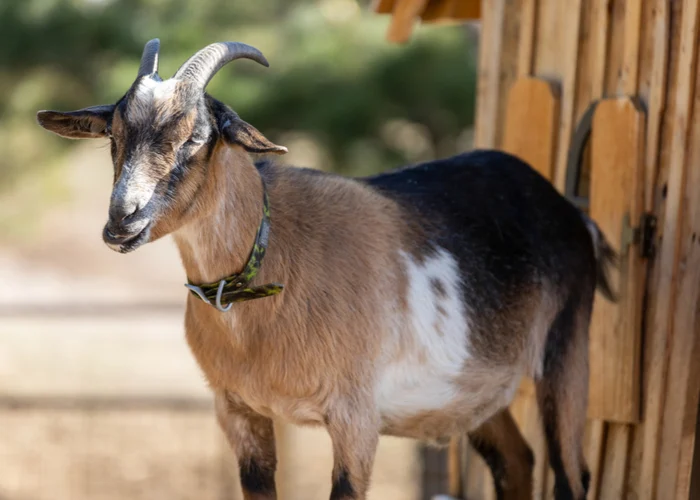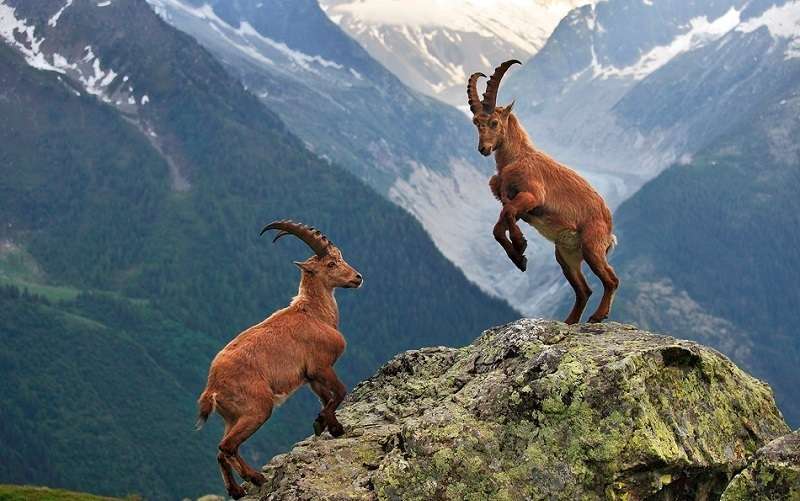
Description:
It is a little goat with a primarily white body with a black head and neck that extends to the withers or girth. It may have a white “star,” “stripe,” or “flame” on its face, and occasionally a thin chin stripe runs from the base of the neck to the brisket. There are often lone black dots in the white sections, and occasionally the black extends as a “saddle” along the back. The face is straight or slightly depressed, and the head is delicate. When viewed from the front, the wide forehead and small muzzle frequently give the head the appearance of being triangular. Females typically have horns that are straight or slightly curling backward from the centre of the forehead. The horns on males are widely placed and have sweeping, long arcs over the back. They are naturally “cow-hocked,” which is typical of wild goats and ibex and is advantageous on rocky terrain, unlike farmed varieties that have been “enhanced” to have a leg in each corner.
Behavior:
Because of its jittery temperament, the Bagot goat cannot be utilized as a harness goat. The Bagot goat has popularity among its fans due to its alluring beauty, intriguing personality, and lengthy history.
Despite the fact that they are treated like a domestic breed by people, their behavior offers an intriguing glimpse into how independent herd species communicate with one another. Yet, this is understandable given that they are a domestic breed.

Benefits/Uses:
Bagot goats are not suitable for commercial use because they are too small compared to Boer goats to be a viable meat breed, they produce high-quality but insufficient quantities of milk (usually only one kid), and they produce insufficient amounts of cashmere to compete with Angora. They have been utilized at RSPB reserves in Wales, Kent, and Canterbury because they are suitable for conservation grazing, where their browsing activity encourages variation in the ground conditions useful to other wildlife. In order to replenish the two Kashmiri goats still living that were initially released for the same purpose in 2011, four juvenile Bagot goats were brought to Bristol’s Avon Gorge in April 2021.
Origin/History:
At Blithfield Hall, bagot goats were first brought to England in the 1380s. They most likely have goat origins from the Rhone valley and were brought to England by returning Crusaders. According to legend, King Richard II of England gave the goats to John Bagot of Blithfield to honor the successful hunting the King had done in Blithfield.
While it was long believed that the Bagot had foreign roots, scientific study, including DNA profiling, has proven that this is untrue. Instead, it has shown that the Bagot came from an isolated population of native goats within what is now known as the “Old English” type. There were reportedly fewer than 200 registered breeding females as of March 2017.
Table





